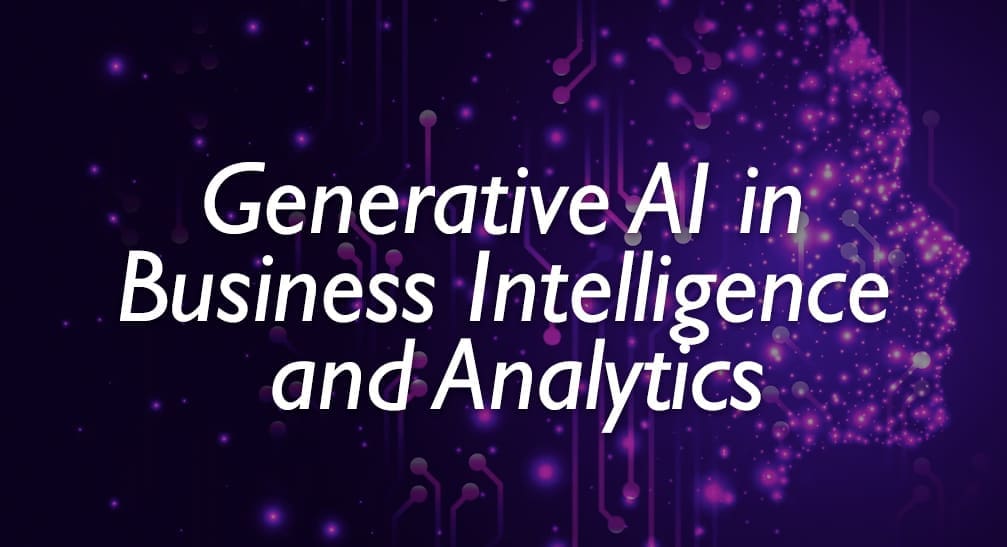Explore the evolved Business Intelligence (BI) tools to transform your products and services to be more data driven for the best business decisions.
Business Intelligence has helped you analyze your raw Big Data and presented you with insights for better informed business decisions. It has transformed the problem of your organization drowning in an influx of data into an opportunity. An opportunity to encompass various tools, applications, and strategies to make sense of your Big Data and empower you to get data driven. And this has been the underlying concept of BI since ancient times. Mankind has created procedures, systems and instruments for gathering and investigating insights to facilitate basic decision making.
But have you explored the significantly evolved Business Intelligence tools to make the best possible decisions?
The Business Intelligence and data analytics market is in the completion stages of a shift from being IT-led to business-led. As a result, the modern Business Intelligence and business analytics platform has evolved to keep up with the contemporary organizational requirements for accessibility, agility and deeper analytical insights.
Business Intelligence provides
Root-cause analysis (ability to drill down on Key Performance Indicators (KPIs) to a more detailed report)
Time-Series analysis (ability to track and analyze key metrics over time to identify trends and exceptions)
Predictive analysis (ability to forecast, model, and analyze complex relationships)
Segment analysis (ability to define, manage, and understand the behavior of business groupings such as strategic customer segments, departments, and regions)
Statistical process control (ability to monitor and track variables via control charts and statistical analysis, commonly used in quality control programs such as Six Sigma and Total Quality Management)
How it has evolved over years
First generation of BI in the 1990s: The concept of self-service was restricted to the vendor vision and was an entirely IT-led operation with minor discrepancies in the Big Data impacting the end result. During the first generation of BI, businesses could not make quick responsive decisions like they can today.
Second generation in 2000: Self-service BI tools like Tableau, QlikView and others entered the data analytics market, letting the employees access more than just a static report. Although this passed on the business analytics to the business analysts, but they were still dependent on IT to get the Big Data rather than the data coming to them.
Third generation: That brings us to today where the entire process of data analytics is self-service, or IT-enabled, instead of IT-led. This means analyzing the multi structured data for greater value and insights and saving a lot of time as well as cost to improve efficiency. And this is only the start. This year, the emphasis is on intelligent automation, Machine Learning, augmented analytics and natural language processing as these factors collectively transform the way you interact with complex data and information. The major factors driving the BI market are increasing adoption of cloud, growth of advanced business analytics, adoption of data-driven decision-making, and the emergence of Internet of Things (IoT)-enabled technologies.
Using Cloud BI, you can get access to the data anytime, anywhere and as a result, about 75% of businesses plan to deploy Cloud BI by the end of this year.
According to a recent survey
- Companies using BI are more likely to make decisions up to 5 times faster.
- The BI & Data Analytics industry will grow to up to $20 Billion by 2019.
- Over 50% of companies plan to deploy BI tools soon.
- Cloud Segment is expected to have highest “Compound Annual Growth Rate” (CAGR)
How are you going to keep up with the evolved Business Intelligence tool that is the future of all businesses?
- When you start using BI, you adorn the role of an analyst. So, for allowing the Big Data to find you instead of the other way around, use the latest technology to apply the right amount of data in the right visualized format, within the proper setting daily. This lets Business Intelligence become a seamless part of your applications.
- Educate your employees to acquire a certain level of business and data analytics skills to make data driven decisions better. You can avail from the free courses and online content to create a broader base of analytical skills to let your organization thrive in this data-driven economy.
So, no more drowning in Big Data. Welcome aboard the third generation of BI and gear up your business with the evolved Business Intelligence tools with speed and confidence to make the best, transformative, data analytics and business analytics decisions.


